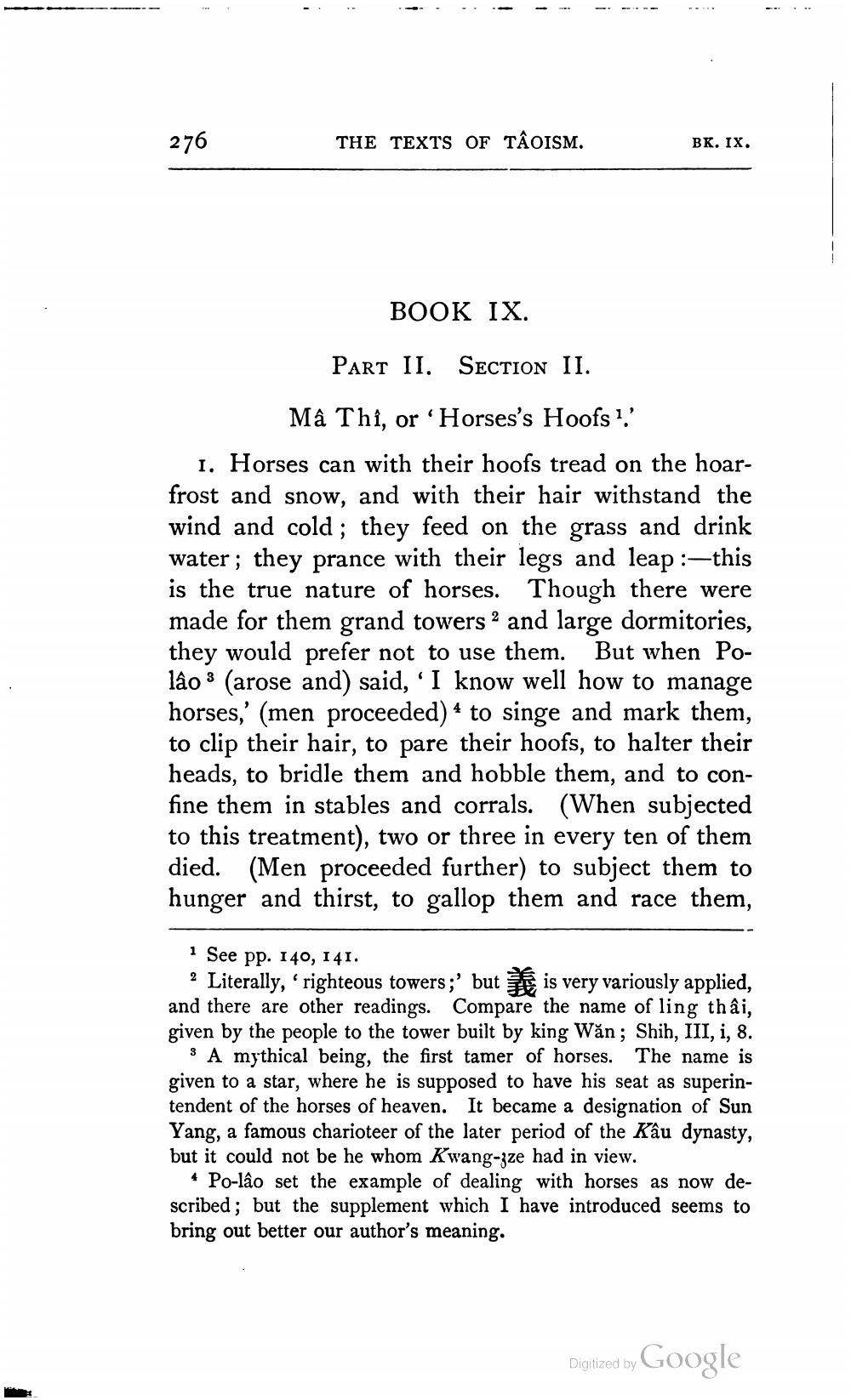________________
276
THE TEXTS OF TÂOISM.
BK. IX.
BOOK IX.
Part II. Section II.
Mâ Thỉ, or "Horses's Hoofs?.' 1. Horses can with their hoofs tread on the hoarfrost and snow, and with their hair withstand the wind and cold ; they feed on the grass and drink water; they prance with their legs and leap :-this is the true nature of horses. Though there were made for them grand towers 2 and large dormitories, they would prefer not to use them. But when Polâo 3 (arose and) said, 'I know well how to manage horses,' (men proceeded) * to singe and mark them, to clip their hair, to pare their hoofs, to halter their heads, to bridle them and hobble them, and to confine them in stables and corrals. (When subjected to this treatment), two or three in every ten of them died. (Men proceeded further) to subject them to hunger and thirst, to gallop them and race them,
1 See pp. 140, 141.
2 Literally, ‘righteous towers;' but is very variously applied, and there are other readings. Compare the name of ling thâi, given by the people to the tower built by king Wăn; Shih, III, i, 8.
3 A mythical being, the first tamer of horses. The name is given to a star, where he is supposed to have his seat as superintendent of the horses of heaven. It became a designation of Sun Yang, a famous charioteer of the later period of the Kâu dynasty, but it could not be he whom Kwang-zze had in view.
• Po-lâo set the example of dealing with horses as now described; but the supplement which I have introduced seems to bring out better our author's meaning
Digitized by Google




